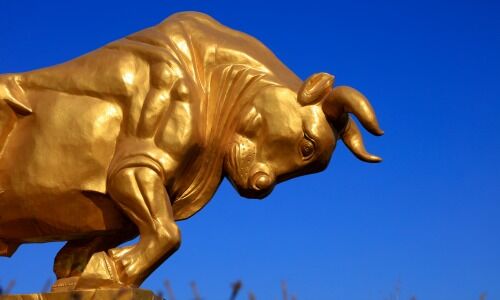How Will Gold React to Covid-19?
Despite a strengthening dollar and rising stock prices, the price of gold hit $1,626 – a seven-year high, and more than $100 up since the beginning of 2020 – on Thursday as investors continue to pile into the yellow metal.
While the negative economic consequences of the Covid-19 outbreak appear to be increasing, supporting the flight into gold, the World Gold Council (WGC) said in a recent blog post that the drag from a potential deceleration of Chinese gold consumer demand, may have a more noticeable effect on price than it did during the Sars epidemic in 2003.
«The coronavirus outbreak in China is evolving rapidly and how it plays out is yet to be determined but, in our view, it is all but certain that China’s consumer demand will ease,» said Andrew Naylor, director of Central Banks and Public Policy, World Gold Council, in an interview with finews.asia.
Naylor said that WGC expects Q1 demand to contract by at least 10 to 15 percent, and whether demand rebounds or continues to soften will depend on the duration of the epidemic and its impact on economic growth.
The Only Safe Haven in Town?
Naylor said that the strong performance of the gold price in 2019 reflected investors’ changing expectations during the year, notably around U.S. interest rates.
«Investors choose their assets for a number of reasons and we believe that gold is not only a useful long-term strategic component for portfolios, but one that is increasingly relevant in the current environment of low interest rates and continued financial market uncertainty,» he said
Naylor pointed to continued global political uncertainty and a slowing Chinese economy, coupled with the outbreak of the coronavirus, adding to the risks and uncertainty investors are trying to manage.
Slowing Economic Growth to Support Gold
With a lower economic growth forecast for many Asian economies in 2020, Naylor said the interplay between market risk and economic growth will drive gold demand this year, and that many of the global dynamics seeded over the past few years will remain generally supportive for gold in 2020.
«While gold price volatility and weaker economic growth may result in softer consumer demand, market downturns often boost investment demand for gold as a safe haven,» he said
ETF Inflows Continue
Naylor noted the continued inflows into gold exchange-traded funds, which reached all-time highs in January, prompted by continued global geopolitical uncertainty and a sharp fall in global rates as the result of market concerns.
«The price rise also drew in momentum-driven inflows. For European-listed funds, ultra-low interest rates and persistent global geopolitical uncertainty have been the twin-engines of long-term growth,» he said.
According to World Gold Council data, global gold-backed ETFs and similar products added 61 tonnes in January across nearly all regions, boosting holdings to 2,947 tonnes. Combined with a gold price increase of nearly 5 percent, assets under management (AUM) grew 8 percent in U.S. dollar terms during the month.



























